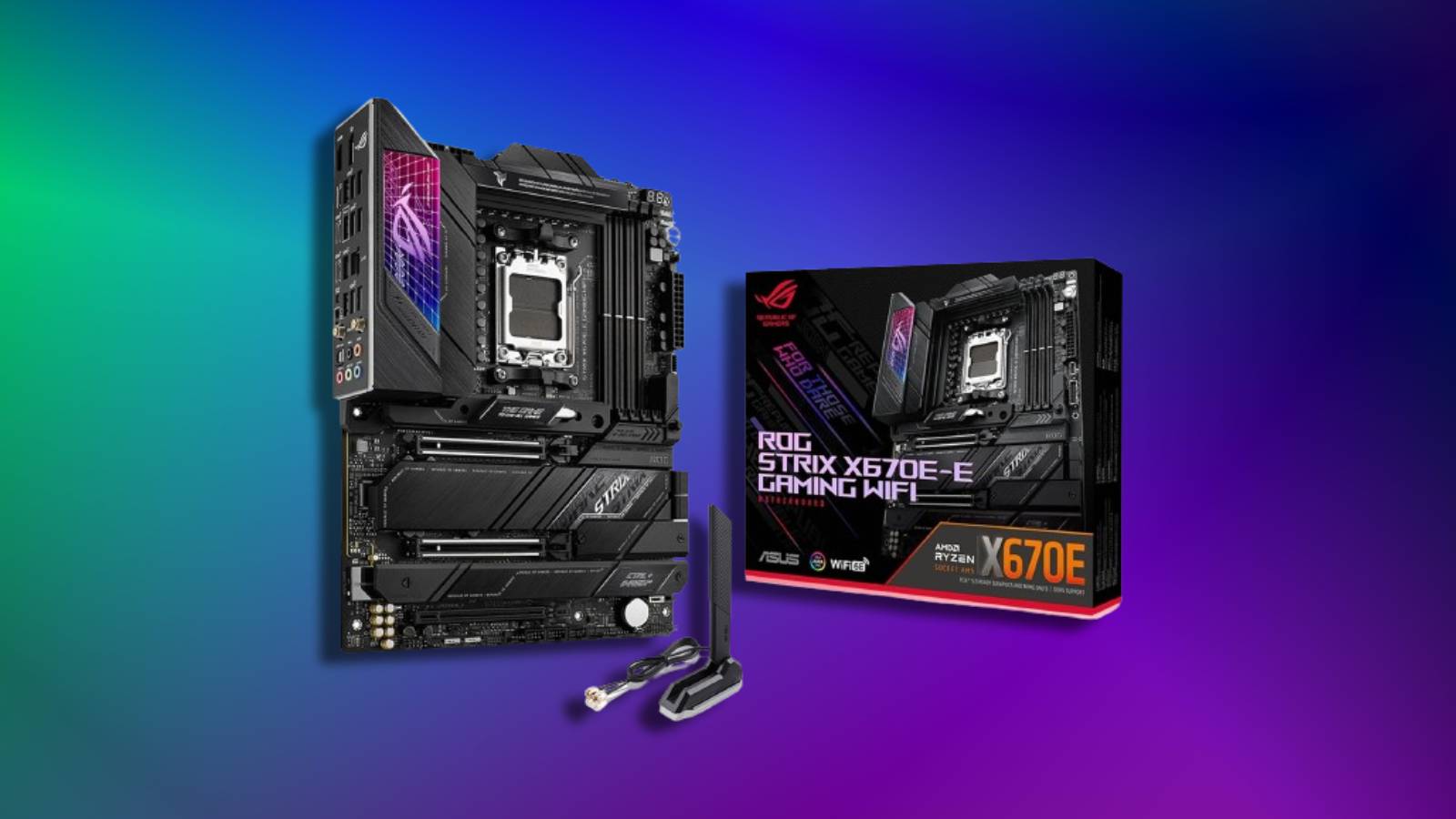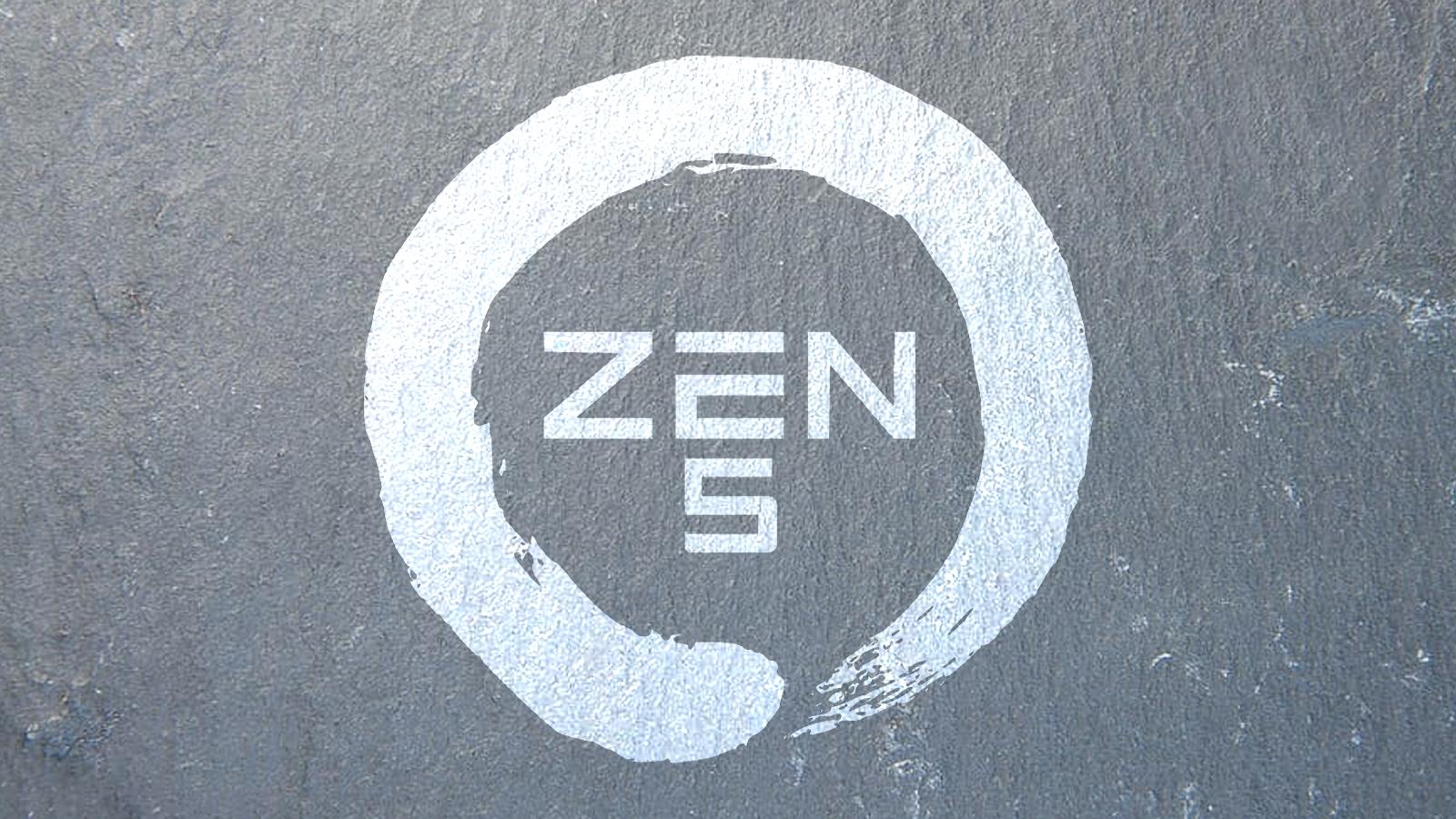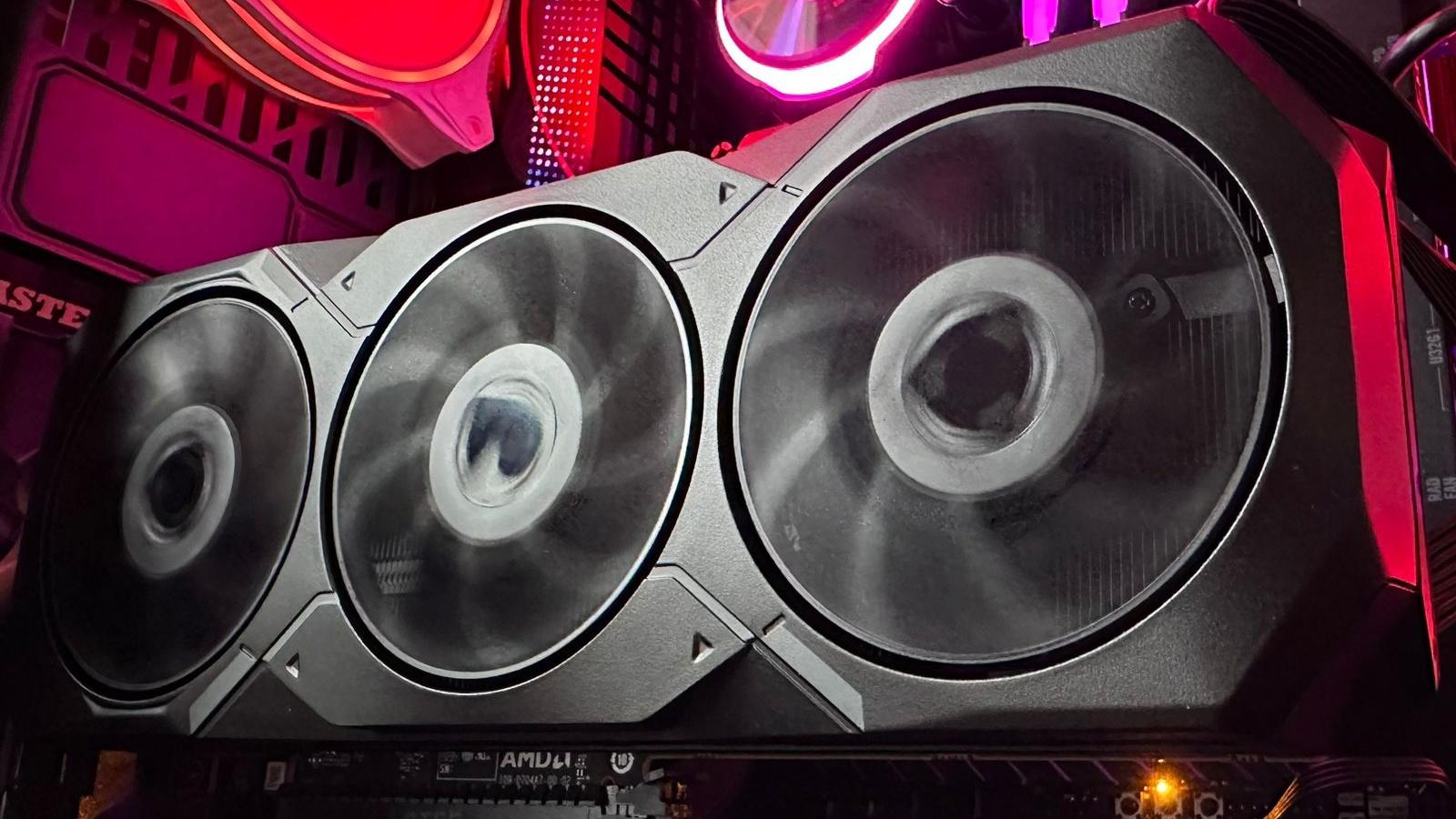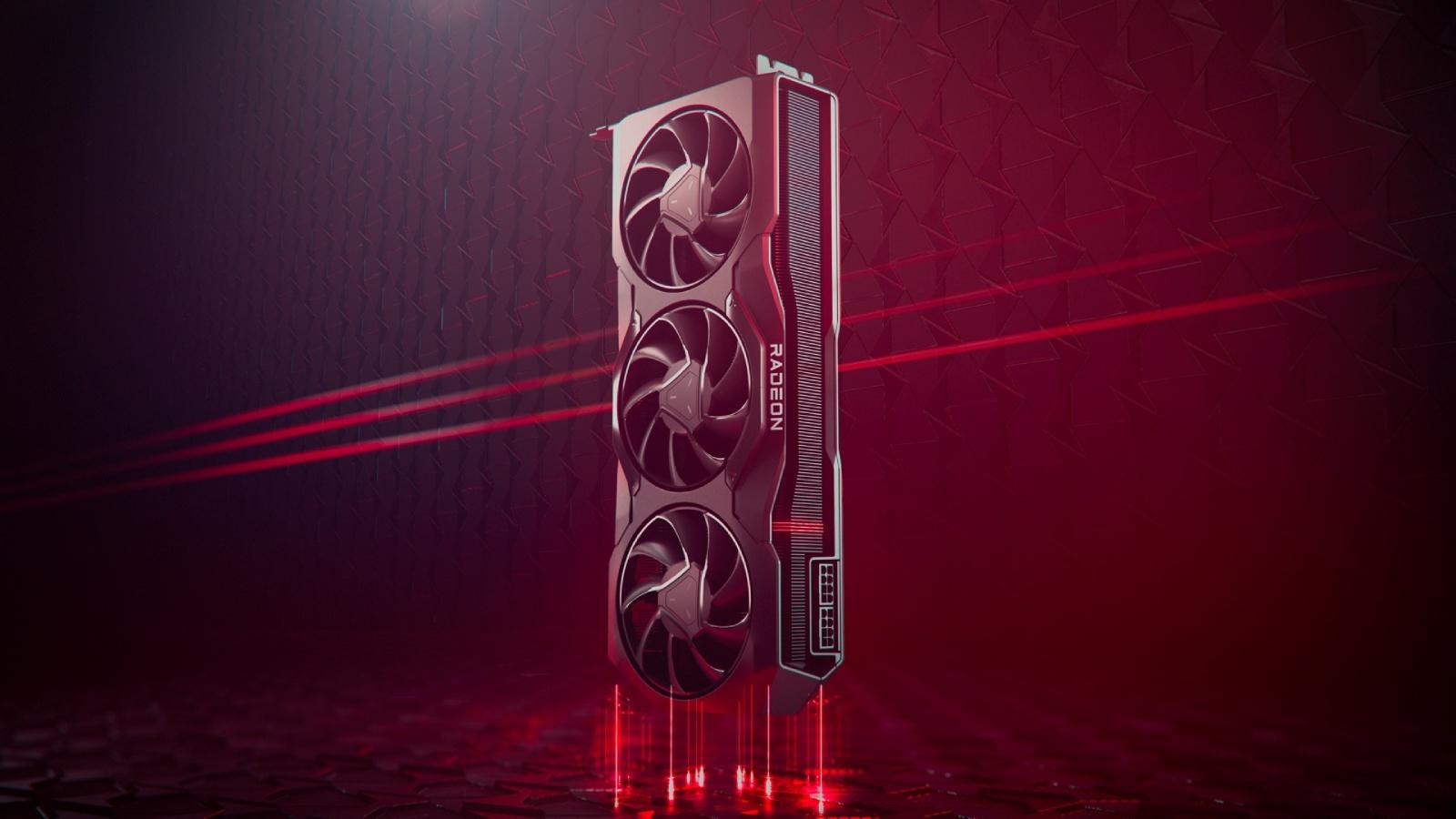AMD Radeon RX 7800 XT review: The value king
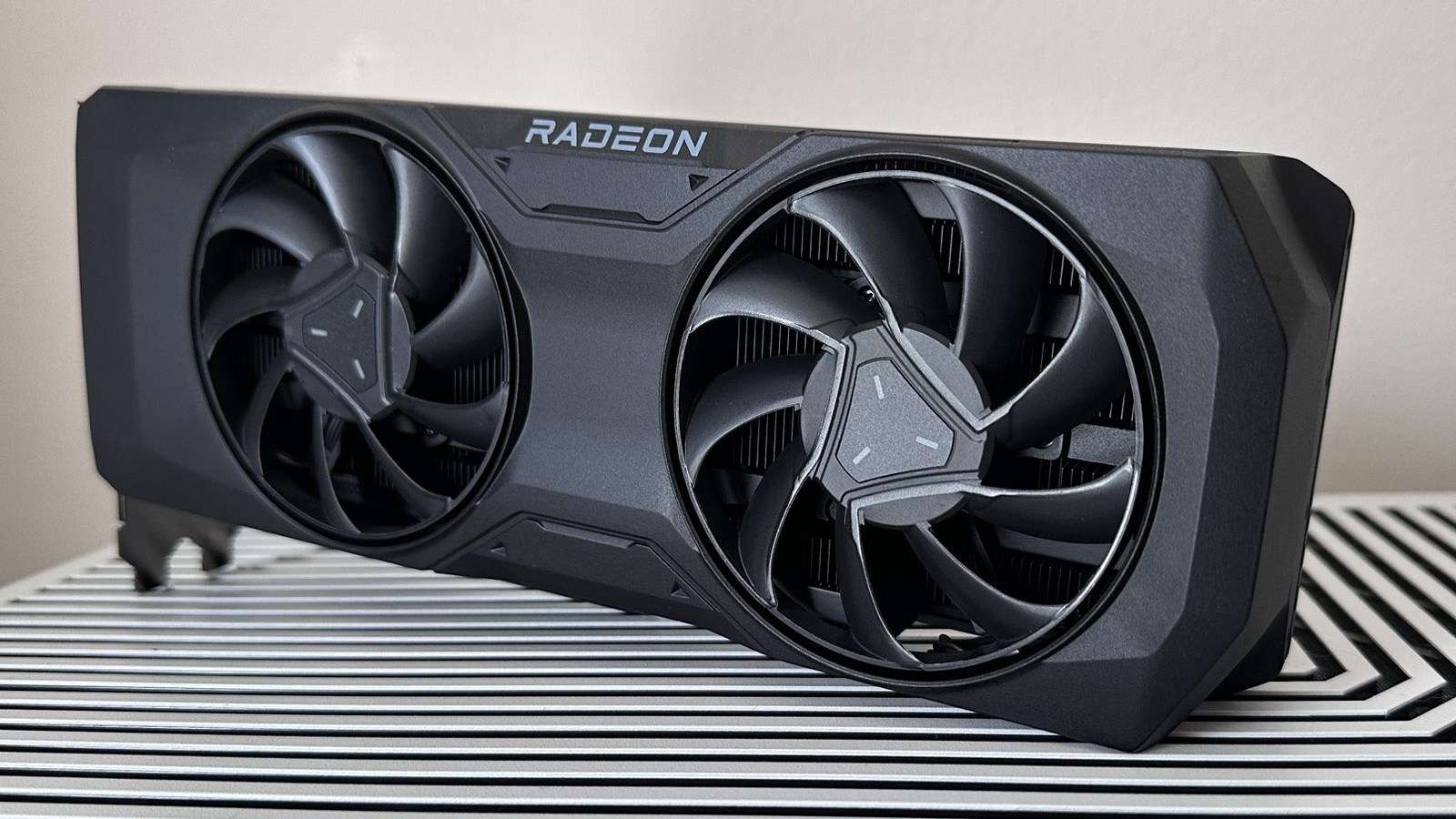 Dexerto
Dexerto AMD’s RX 7800 XT is finally here after being announced at Gamescom 2023. But, does the GPU manage to bring the performance where it really counts to gamers?
AMD’s RX 7800 XT was extensively leaked ahead of its official reveal at Gamescom 2023. However, the GPU’s price point comes in at $100 cheaper than its RTX 4070 rival. But, does it manage to bring the performance where it really counts?
The GPU is kitted out with more VRAM than its Team Green counterpart and also boasts that it can outperform the GPU on several levels. We’ve had some time to test out the graphics card ahead of its launch, and can directly compare the two so you get a better understanding of what to expect, and if it’s really worth your hard-earned cash.
While we did not have the opportunity to test out FSR 3‘s implementation ahead of its launch, we have got a good idea of what kind of performance you can expect from the card, in all manner of resolutions.
Key specs
| AMD Radeon RX 7800 XT | |
| Stream processors | 3840 |
| Compute units | 60 |
| RT accelerators | 60 |
| AI accelerators | 120 |
| Game clock | 2124 MHz |
| Boost clock | 2430 MHz |
| GDDR6 memory | 16GB |
| Memory interface | 256-bit |
| Memory speed | 19.5Gbps |
| AMD infinity cache | 64Mb |
| Displayport | 2.1 |
| TGP | 263W |
| Price | $499 |
Design
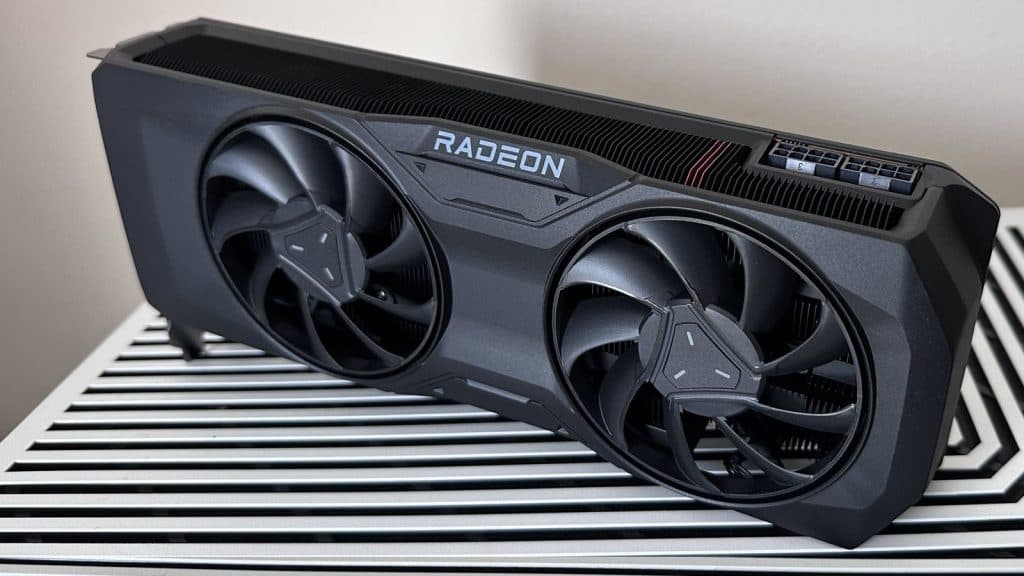 Dexerto
Dexerto The AMD RX 7800 XT that we reviewed is the “Made by AMD” model, which apes a reference graphics card. Its clean-cut looks slim down the triple-fans seen on the RX 7900 XT to a dual-fan configuration, with similar design elements retained. We’re huge fans of the red and black look, which does not have any unnecessary RGB trimmings.
It all results in a clean-looking GPU all around, as the plastic mechanical looks of the front of the GPU look like they have come straight out of Armored Core 6. Its metallic backplate should also assist with heat dissipation throughout the device, too.
Up top, your power connector is a standard 2x 8-pin PCIe power connector, meaning that you won’t have to mess around with any ATX 3.0 adapters as seen on the RTX 40-series lineup. We’re big fans of GPUs looking more like serious tools, rather than a glitzy RGB happy-meal toy looks that some brands are fond of.
Navi 32
AMD’s Navi 32 architecture is housed within the RX 7800 XT, and it’s packed with all of the stream processors, compute units, and AI accelerators that you could want. AMD has also improved the ray tracing performance of RDNA 3, allowing for slightly faster speeds. Other trimmings also include AV1 support, as well as a rapid infinity cache, which allows for an effective bandwidth of 2708.4 GB/s.
The GPU is less power-efficient than its Team Green brethren, requiring up to 263W of power when pushed to the brink. It’s here that the GPU will attempt to boost up to 2430 MHz, in order to get the most performance possible out of the card.
AMD has also looked future-forward, outfitting the RX 7800 XT with both HDMI 2.1 and DisplayPort 2.1 specifications, though you’re not likely to make use of the power of DP 2.1 with a graphics card of this power.
Performance
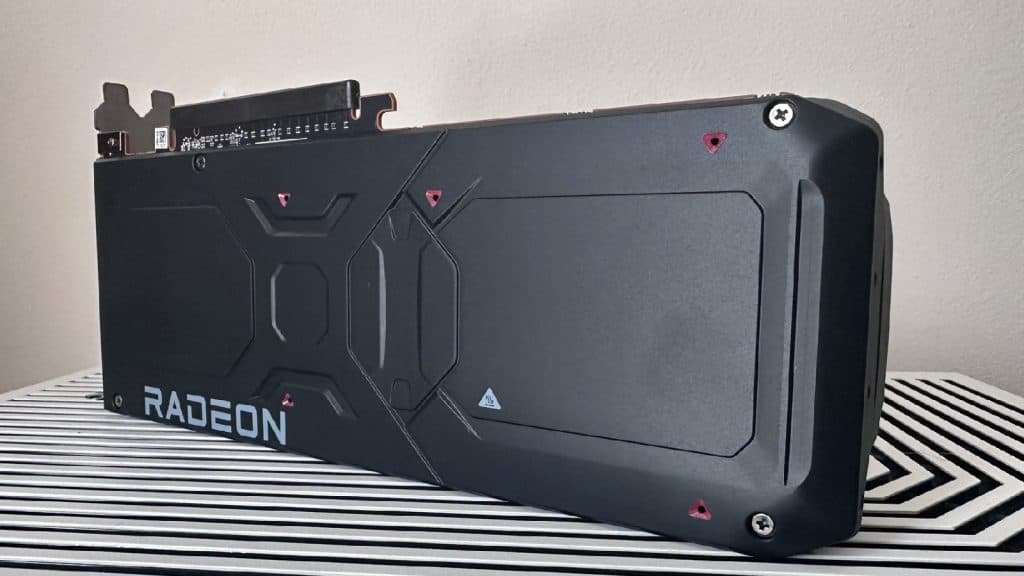 Dexerto
Dexerto The AMD Radeon RX 7800 XT promises rapid 1440p performance, a sweet spot for modern PC gamers, who are looking for a middle-ground between 1080p and 4K. We’ve also tested the GPU with FSR 2 supersampling, which is the latest version AMD currently uses. FSR 3 and its frame-generation capabilities have yet to be launched, so we were unable to test this.
We’ve also benchmarked the GPU at 4k, 1440p, and 1080p against other graphics cards in our testbench system.
Test System
- CPU: Intel Core i5-13600K
- CPU cooler: Cooler Master PL360 Flux
- Motherboard: ASUS ROG Z790 Maximus Extreme
- RAM: ADATA XPG Lancer RGB 32GB DDR5-6000
- Storage: Sabrent Rocket 4 Plus 4TB
- Case: Hyte Y60
- PSU: EVGA Supernova GT 1300
Some synthetic benchmarks had to be completed without the included PCIe riser cable in our Hyte Y60 due to compatibility issues, however performance using the cable in games and other titles remained identical to a direct connection. We’re putting this down to a dodgy cable, rather than anything that the GPU has done particularly wrong, or incorrectly.
RX 7800 XT 4K gaming performance
The RX 7800 XT might not be built for 4K, but the graphics card puts in a valiant effort against the competition, with some genuinely surprising results.
| Game | Radeon RX 7800 XT | RTX 4060 Ti 8GB | RTX 4070 | RTX 4070 Ti | RTX 4080 | AMD Radeon RX 7900 XT |
| Forza Horizon 5 (Ultra, RT & DLSS off) | 113 FPS | 77 FPS | 89 FPS | 123 FPS | 137 FPS | 107 FPS |
| Cyberpunk 2077 (Ultra, RT Ultra, DLSS 3 Performance, Frame Generation) | 38FPS | 35 FPS | 72 FPS | 86 FPS | 108 FPS | 44 FPS |
| Cyberpunk 2077 (Ultra, RT Ultra, DLSS off) | 12 FPS | 1 FPS | 17 FPS | 22 FPS | 29 FPS | 16 FPS |
| CS:GO (High, Dust 2) | 229 FPS | 186 FPS | 204 FPS | 252 FPS | 399 FPS | 340 FPS |
| Overwatch 2 (Ultra) | 172 FPS | 126 FPS | 157 FPS | 257 FPS | 446 FPS | 308 FPS |
Overall, the Radeon RX 7800 XT is around 10% faster than the RTX 4070, discounting super-resolution and frame generation technologies. In our testing, the gap closes to around 5% when taking into account the 4070’s DLSS 3 capabilities.
In pure rasterization workloads like Forza Horizon 5, CS:GO, and Overwatch 2, the 7800 XT manages to put in an incredibly impressive shift here, breaking 100FPS in every title without ray tracing or supersampling tech. While AMD might not scream from the rooftops about it, the performance on offer here is just a cut above what Team Green can currently muster within this price point. The additional performance can also be owed to the VRAM capacity of the card, too.
RX 7800 XT 1440p gaming performance
At 1440p, the GPU really enters into its comfort zone, offering rapid triple-digit performance in almost all titles. However, AMD remains behind Team Green when it comes to ray traced performance, and its current supersampling tech. Again, FSR has yet to be launched at the time of writing.
| Game | Radeon RX 7800 XT | RTX 4060 Ti 8GB | Radeon RX 6700 XT | Radeon RX 6800 | RTX 4070 |
| Forza Horizon 5 (Ultra, RT & DLSS off) | 156 FPS | 108 FPS | 83 FPS | 129 FPS | 132 FPS |
| Cyberpunk 2077 (Ultra, RT Ultra, DLSS 3 Performance, Frame Generation / FSR) | 67 FPS | 67 FPS | 28 FPS | 44 FPS | 126 FPS |
| Cyberpunk 2077 (Ultra, RT Ultra, DLSS off) | 26 FPS | 32 FPS | 15 FPS | 20 FPS | 39 FPS |
| CS:GO (High, Dust 2) | 535 FPS | 384 FPS | 419 FPS | 519 FPS | 607 FPS |
| Overwatch 2 (Ultra) | 364 FPS | 234 FPS | 199 FPS | 293 FPS | 356 FPS |
In our benchmarks, the RX 7800 XT puts in an impressive show, showcasing how fast its raster technology has become. While it lags behind the RTX 4070 by around 5% when discounting DLSS and FSR, it still manages to put in an excellent performance. When FSR 3 finally lands, we expect that the gap will become slightly more closed here, too.
Additionally, our benchmarking suite does not include certain titles like Hogwarts Legacy, or The Last of Us Part I, which can be a bottleneck in terms of performance for the RTX 4070, it’s here that we expect the RX 7800 XT to shine.
Compared to its previous-gen counterpart, the RX 6800, the 7800 XT is faster by around 13%. While this generational performance uplift might not be the biggest we’ve ever seen, it’s still impressive, especially considering that the RX 7800 XT arrives at a much more palatable price point.
RX 7800 XT 1080p gaming performance
If you are still on 1080p and are looking for a GPU to hit high framerates, then the RX 7800 XT also looks like an attractive option, too.
| Game | Radeon RX 7800 XT | RTX 4060 Ti 8GB | RX 6700 XT | Radeon RX 6800 | RTX 4070 |
| Forza Horizon 5 (Ultra, RT & DLSS off) | 176 FPS | 129 FPS | 103 FPS | 142 FPS | 151 FPS |
| Cyberpunk 2077 (Ultra, RT Ultra, DLSS 3 Performance, Frame Generation / FSR) | 90 FPS | 110 FPS | 38 FPS | 55 FPS | 149 FPS |
| Cyberpunk 2077 (Ultra, RT Ultra, DLSS off) | 42 FPS | 41 FPS | 25 FPS | 40 FPS | 60 FPS |
| CS:GO (High, Dust 2) | 655 FPS | 583 FPS | 532 FPS | 597 FPS | 647 FPS |
| Overwatch 2 (Ultra) | 473 FPS | 372 FPS | 284 FPS | 418 FPS | 422 FPS |
The Radeon RX 7800 XT is around 5% faster than the RTX 4070. When accounting for DLSS 3 and FSR 2, the gap narrows to just 0.4% between the two graphics cards. In general, you can expect stellar rasterization performance across the board here, although the RX 7800 XT’s wider VRAM capacity is unlikely to have much of an impact here.
Considering that the GPU still undercuts the 4070 by $100, this is an impressive showcase.
Synthetic benchmarks
| Benchmark | Radeon RX 7800 XT | RTX 4060 Ti 8GB | Radeon RX 6700 XT | Radeon RX 6800 | RTX 4070 | RTX 4070 Ti |
| Speed Way | 3671 | 3112 | 2268 | 3038 | 4520 | 5471 |
| Port Royal | 10026 | 7777 | 6326 | 7648 | 11293 | 14230 |
| Time Spy Extreme (Graphics score) | 8933 | 6231 | 6051 | 7705 | 8608 | 11015 |
The strengths and weaknesses of the Radeon RX 7800 XT become nakedly clear when looking at synthetic performance. The GPU manages to outpace the RTX 4070 by around 300 points in Time Spy Extreme, but its ray tracing performance lags behind in both Speed Way and Port Royal.
There’s no denying that AMD has to play catch-up when it comes to making RT workloads faster on their GPUs, but the rasterization performance here and in-game seems to indicate that AMD has created a fantastic, competitive graphics card at this price point.
Thermals, noise & power
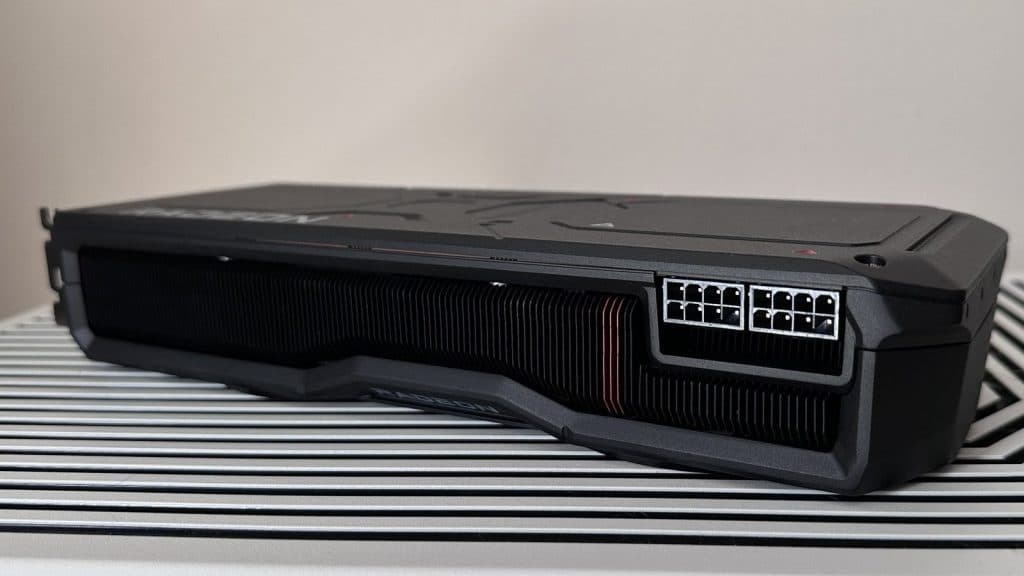 Dexerto
Dexerto The AMD GPU’s dual-slot design and two fans seem to have put in work, with the RX 7800 XT reaching a peak of 73 degrees under 100% load. Here, the GPU managed to maintain its boost clock, up to around the 70-degree mark, where it then began to throttle lightly.
Even under maximum load, the graphics card remained relatively quiet, and the GPU doesn’t get any louder than you would expect it to – even on your desk. However, something to note is that the GPU can reach up to 260W in power demands. This is significantly more than the RTX 4070, which tops out at a total of 160W.
This 100W difference will hit your wallet in the long-term, and we hope that AMD introduces more power-efficient chips in the future.
Should you buy it?
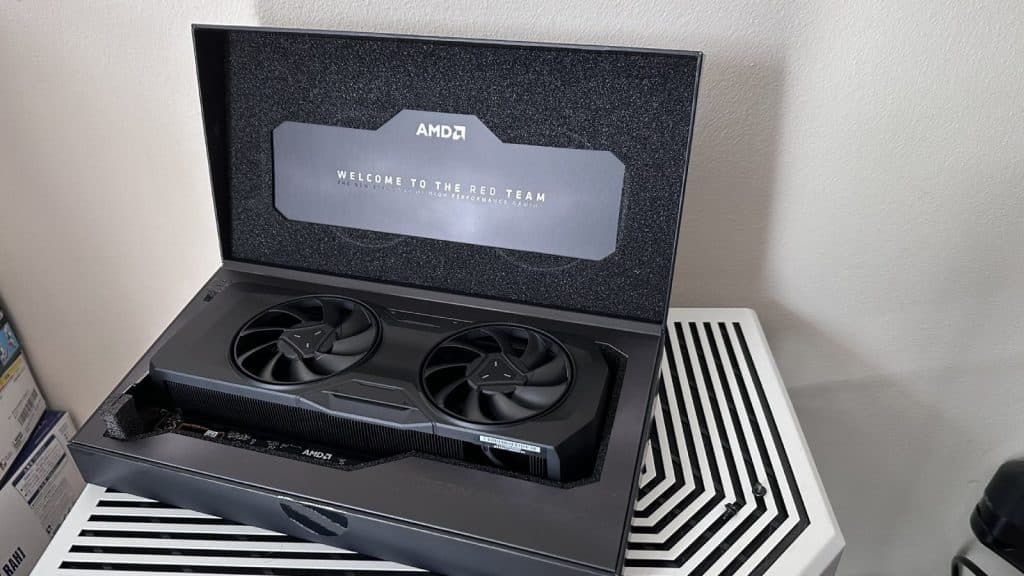 Dexerto
Dexerto On the surface, the AMD RX 7800 XT is an impressive graphics card, which manages to deliver where it counts at all resolutions gamers are targeting in 2023. It stands up well against the RTX 4070 in every benchmark we tested it against. However, the ray tracing performance and efficiency of the GPU lags behind.
Since the GPU is also $100 cheaper than the MSRP of the competition, it makes the RX 7800 XT an extremely attractive option to budget-conscious gamers looking for a GPU to deliver excellent rasterized performance, with the promise of FSR 3’s frame generation to land in the future. AMD GPUs are often likened to fine wine, with performance increasing as the GPU ages, but the RX 7800 XT has already come out to market as a fine vintage, and in our minds, is the current GPU value champion.
The Verdict: 5/5
AMD’s RX 7800 XT is great, and while it could be more power efficient, or deliver more frames. At $499, the GPU is impressive, offers an adequate generational uplift, and manages to outprice the competition all at the same time. It’s about time the GPU market had a real value contender at this price point, and we’re glad to see AMD bring the fight straight to Nvidia.
If you click on a product link on this page we may earn a small affiliate commission.
